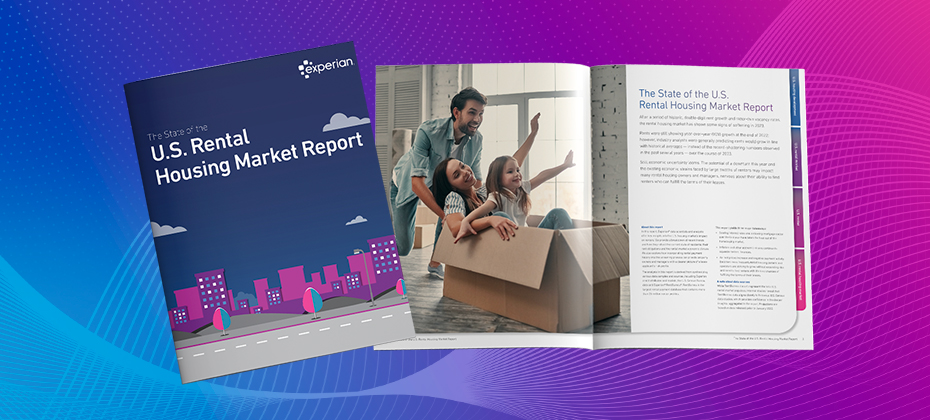
After a period of historic, double-digit rent growth and razor-thin vacancy rates, the rental housing market has shown some signs of softening in recent months. And economic uncertainty still looms. The potential of a downturn this year and the existing economic strains faced by large swaths of renters may impact many rental-housing owners and managers nervous about their ability to find renters who can fulfill their lease terms.
In The State of the U.S. Rental Housing Market, a new report from Experian, our data scientists and analysts offer key insights into the U.S. housing market and its impact on renters. The analysis in this report is derived from synthesizing various data samples and sources, including Experian credit attributes and models as well as data from the U.S. Census Bureau and Experian RentBureau®. Experian RentBureau is the largest rental payment database and contains over 4.4 million transactions and more than 25 million renter profiles.
This report yields three major takeaways:
- Soaring interest rates and a slowing mortgage sector over the last year have taken heat out of the homebuying market, leading to more renters remaining in the renter pool.
- Inflation and other economic strains continue to squeeze renters’ finances.
- As rent prices increase and negative payment activity becomes more frequent, rental-housing owners and operators are striving to grow without expanding default risk and need to find renters with the best chances of fulfilling the terms of their leases.
Among the report’s other notable findings:
- The average renter spends 38.6% of their income on rent. Households that spend more than 30% of their income on housing costs — including rent or mortgage payments, utilities and other fees — are considered “housing cost burdened” by the U.S. Department of Housing and Urban Development.
- Experian data shows 28% of renters with negative payment activity in 2022 (negative payment activity is defined as having late charges, insufficient funds, write-offs or outstanding balances). The figure represented an increase of 5.7 percentage points from 2021 and 3.8 percentage points from 2020. Also of note, low-to-moderate income renters are twice as likely to have a negative payment activity compared to other renters.
Rent-to-income ratios are highest in the West and the Northeast. Among all 50 states, the leaders are Washington D.C. (40.9%), California (39.7%), Washington state (35.6%), Utah (35.6%) and New York (35.3%).
Keep pace with trends in future blog posts that will dive deeper into the current conditions affecting the rental housing market and renters.
In the meantime, click here to download your free copy of The State of the U.S. Rental Housing Market Report in full.


